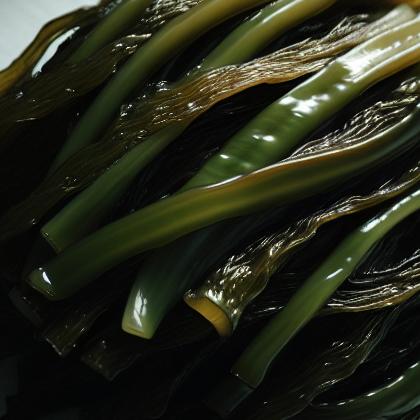Kelp

Kelps are large seaweeds (algae) belonging to the brown algae (Phaeophyceae) in the order Laminariales. There are about 30 different genera.[citation needed]Kelp grows in underwater "forests" (kelp forests) in shallow oceans, and is thought to have appeared in the Miocene, 23 to 5 million years ago. The organisms require nutrient-rich water with temperatures between 6 and 14 °C (43 and 57 °F). They are known for their high growth rate — the genera Macrocystis and Nereocystis can grow as fast as half a metre a day, ultimately reaching 30 to 80 metres (100 to 260 ft).Through the 19th century, the word "kelp" was closely associated with seaweeds that could be burned to obtain soda ash (primarily sodium carbonate). The seaweeds used included species from both the orders Laminariales and Fucales. The word "kelp" was also used directly to refer to these processed ashes.
Kelp Properties:
| Food Property | Type | Description |
|---|---|---|
| Flavor Profile | Umami | Kelp has a savory and rich umami taste, often described as being similar to mushrooms. |
| Texture | Firmness | Kelp has a firm texture that can be slightly chewy when cooked. |
| Nutritional Value | Fiber | Kelp is high in dietary fiber, which can aid digestion and promote a feeling of fullness. |
| Micronutrients | Kelp is a good source of various vitamins and minerals, such as iodine, calcium, and iron. | |
| Color | Natural Pigments | Kelp contains natural green pigments, such as chlorophyll, that give it its characteristic color. |
| Aroma | Volatile Compounds | Kelp has a subtle oceanic aroma due to its marine origins. |
| Chemical Composition | Water Activity (aw) | Kelp has a high water activity, which can affect its shelf life and stability. |
| Cooking Behavior | Heat Conductivity | Kelp has good heat conductivity, making it easy to cook quickly. |
| Water Retention | Kelp has a high water retention property, which can help it stay moist and tender when cooked. | |
| Oil Absorption | Kelp has low oil absorption, making it a healthy cooking option. |
Food Pairing App - Version 1.2.0
